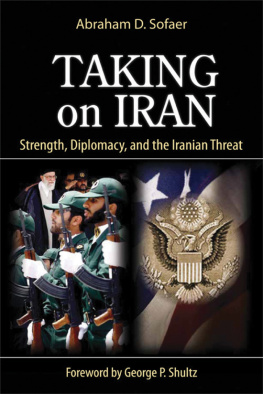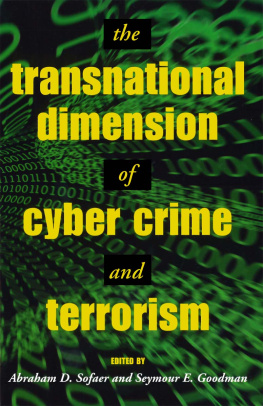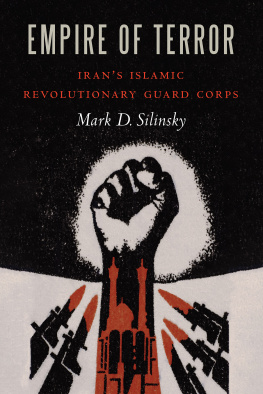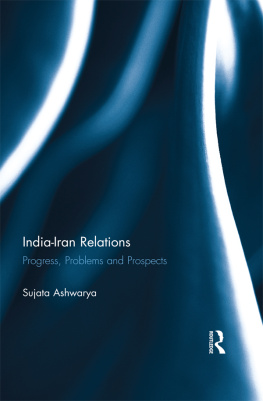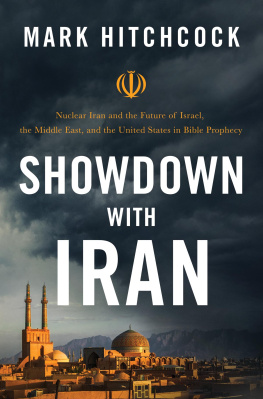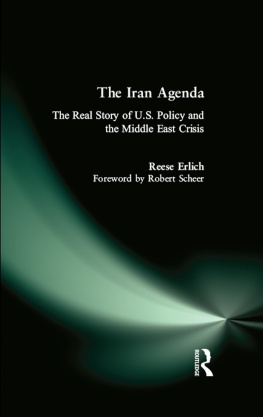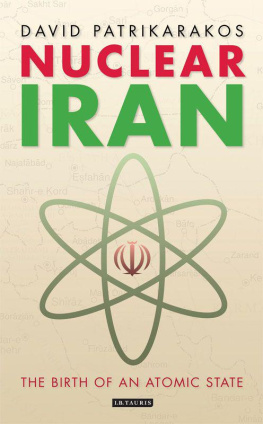The Hoover Institution on War, Revolution and Peace, founded at Stanford University in 1919 by Herbert Hoover, who went on to become the thirty-first president of the United States, is an interdisciplinary research center for advanced study on domestic and international affairs. The views expressed in its publications are entirely those of the authors and do not necessarily reflect the views of the staff, officers, or Board of Overseers of the Hoover Institution.
www.hoover.org
Hoover Institution Press Publication No. 637
Hoover Institution at Leland Stanford Junior University,
Stanford, California 94305-6010
Copyright 2013 by Abraham D. Sofaer
All rights reserved. No part of this publication may be reproduced, stored in a retrieval system, or transmitted in any form or by any means, electronic, mechanical, photocopying, recording, or otherwise, without written permission of the publisher and copyright holders.
For permission to reuse material from Taking on Iran: Strength, Diplomacy, and the Iranian Threat, ISBN 978-0-8179-1634-3, please access www.copyright.com or contact the Copyright Clearance Center, Inc. (CCC), 222 Rosewood Drive, Danvers, MA 01923, (978) 750-8400. CCC is a not-for-profit organization that provides licenses and registration for a variety of uses.
Cataloging-in-Publication Data is available from the Library of Congress.
ISBN 978-0-8179-1634-3 (cloth. : alk. paper)
ISBN 978-0-8179-1636-7 (e-book versions)
Foreword
T he danger humanity faces from nuclear weapons is our most urgent diplomatic challenge. It calls for as broad an array of responses as possible to enhance the prospects of success. This book provides an alternative to war and containment in dealing with the seemingly intractable problem of Irans nuclear threat.
The Islamic Republic of Iran seems determineddespite legal commitments to the contraryto develop nuclear weapons along with the missiles needed to deliver them. If Iran acquires those weapons, it will feel even more confident than it does today to continue with impunity its policy of supporting surrogate and terrorist attacks on the US and our allies. A nuclear-armed Iran will set off a race for nuclear weapons by Sunni states that even now regard Shia Iran as a threat. And it will fuel the fear Irans leaders have generated that such weapons would be used to wipe Israel off the map. From a broader standpoint, allowing any new member to the Nuclear Club increases the danger of further proliferation and ultimately of nuclear war; adding Iran would be especially foolhardy.
So what should the US and its allies do to keep Iran from acquiring nuclear weapons? Wishful thinking about regime change has not worked. The UN Security Council will not adopt the necessary measures. Sanctions may bring Iran to the table if they are strong enough; but what if they are not?
The two options being debatedpreventive attack and containmentboth carry huge risks. Attacks on Irans nuclear sites would be widely condemned, costly, unpopular with the Iranian people, and might well fail. Presidents Truman and Eisenhower rejected using preventive force to keep the Soviet Union from acquiring nuclear weapons for many sound reasonsnot the least of which was the problem of what to do, after destroying a countrys nuclear program, to keep it from starting another.
Although containment carries fewer immediate risks, it rests on the premises that Iran can be deterred and that the consequences of a nuclear-armed Iran would prove manageable. Those premises could prove mistaken, with catastrophic consequences. At some point, the US may have to choose between these two options. Until then, the US should try any sensible alternative that increases the prospect of an outcome that avoids both a major war as well as a nuclear-armed Iran.
My colleague, former State Department Legal Adviser Abraham D. Sofaer, has provided an alternative that should have been implemented long ago and that would be appropriate even if Iran had no nuclear program. He correctly points out that the Iranian Revolutionary Guard Corps (IRGC) and its Quds Force, which operate under the Grand Ayatollah, have supported and conducted attacks on US forces, allies, and interests for over thirty years. And with the single exception of US operations in the Persian Gulf in 198788, they have done so with impunity.
Sofaer has compiled a chilling list of IRGC actions against the US, primarily through its surrogate Hezbollah but also through its support for al-Qaeda, the Sadrists, Hamas, and now the Taliban. It includes the Marine barracks and US Embassy bombings in Lebanon, the Khobar barracks bombing in Saudi Arabia, providing weapons and active leadership to our enemies in Iraq and Afghanistan, and most recently an attempt to kill Saudi Arabias ambassador to the US in Washington, DC. These actions and others have resulted in the deaths of at least one thousand American soldiers, and many thousands of non-combatants. Yet no US administration has used its legal right to defend the US from IRGC-sponsored attacks. The US needs to deal effectively with the present danger of Iranian aggression, while also addressing the potential danger that would be posed if Iran became a nuclear power.
Sofaer points out the key differences between implementing a preventive attack on Irans nuclear program, on the one hand, and using defensive force to deter IRGC aggression, on the other. Preventive attacks on the nations many nuclear facilities would be widely viewed as illegal and illegitimate, difficult and costly to implement, unpopular among the Iranian people, and likely to fail in the long run. Responding to IRGC aggression would be widely acknowledged as lawful and legitimate, easier and less costly to implement because a broader range of targets would be appropriate, and certain to be less widely opposed by Iranians, who fear and disdain the IRGC and its operations.
Frankly, I cannot understand why the US has so long endured IRGC aggression. Responding to it should be the first order of business in dealing with the Iranian threat. The IRGC has gotten away with literal murder for much too long. Iran is responsible for IRGC actions regardless of the level of political approval given by its government for each IRGC operation. We should have taken on Hezbollah and its IRGC supporters in 1983, after they killed 284 Marines. Instead, we tried to trade arms for hostages. And that pattern continued. Presidents Clinton, both Bushes, and now Obama have all failed to respond to IRGC aggression.
Most recently, President Obama, who properly brought Osama bin Laden to justice, has allowed his law enforcement officials to indict rather than hunt down those we know were planning to kill the Saudi ambassador in our national capital. How many times do we need to indict murderers who are being given sanctuary within the countries they are serving before recognizing that such remedies are ineffective? These same people used the Iranian embassy and diplomatic pouch to enable Hezbollah to destroy the Jewish community center in Buenos Aires, and arrest warrants have been outstanding for some of the perpetrators for many years. Meanwhile, Iran has given promotions to some of those charged and treated them all as heroes.
Responding to IRGC aggression is not only a right the US may lawfully exercise, but is also something we need to do for all the reasons Sofaer lays out. How Iran will react is hard to predict. The IRGC, for example, may continue to behave like the criminal organization it is. But the Iranian government is, if anything, likely to take the US more seriously, as it did after our navys 1987 and 1988 operations in the Gulf, and after the US twice overwhelmed Saddam Hussein and pushed al-Qaeda and the Taliban out of Afghanistan. Strength appropriately exercised, rather than threats of possible future actions, will get Irans attention and send a concrete and credible message its leaders need to hear.

